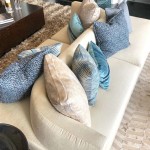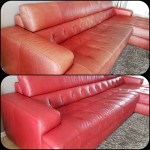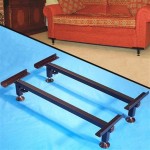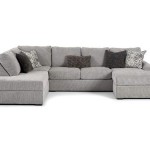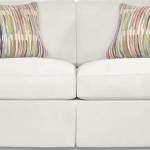Leather Sofa Living Room Design
Leather sofas represent a timeless furniture choice, offering durability, style, and a touch of sophistication to any living room. Designing a living room around a leather sofa involves careful consideration of various factors, including color palettes, furniture pairings, décor elements, and overall room dimensions.
One of the initial considerations is the choice of leather. Various types of leather are available, each possessing unique characteristics. Full-grain leather, known for its durability and natural markings, presents a luxurious option. Top-grain leather offers a slightly more affordable alternative while maintaining a high level of quality. Split-grain leather, created from the lower layers of the hide, is typically less expensive but may not offer the same longevity. When selecting a leather sofa, examining the quality of the leather and understanding its characteristics contributes to informed decision-making.
Color plays a crucial role in the overall aesthetic of the living room. Neutral leather sofa colors, such as brown, black, or gray, offer versatility and can integrate seamlessly into various design schemes. These neutral tones provide a foundational element that can be complemented by accent colors in throw pillows, rugs, and wall art. Bold leather sofa colors, such as red, blue, or green, can make a statement and become the focal point of the living room. When incorporating bold colors, it is advisable to maintain a balanced color palette in the surrounding décor to prevent an overwhelming visual impact.
Choosing complementary furniture pieces is essential for creating a cohesive living room design. Pairing a leather sofa with wooden coffee tables, side tables, and accent chairs can enhance the overall sense of warmth and sophistication. The wood tones should complement the leather color, creating a harmonious balance. Metal accents, such as lamps or decorative objects, can introduce a touch of modern elegance. Glass coffee tables or side tables can create a sense of lightness and airiness, preventing the space from feeling too heavy.
The size and scale of the furniture pieces should be proportionate to the dimensions of the living room. In a smaller living room, a loveseat or a smaller-sized sofa may be more appropriate to avoid overcrowding the space. In a larger living room, a sectional sofa or a larger sofa paired with armchairs can create a comfortable and inviting seating area. Careful space planning ensures that traffic flow is not impeded and that the furniture arrangement fosters a functional and aesthetically pleasing environment.
Textiles and textures add depth and visual interest to the living room design. Throw pillows, blankets, and rugs can introduce color, pattern, and tactile elements to complement the leather sofa. Natural materials, such as wool, cotton, and linen, create a sense of warmth and comfort. Contrasting textures, such as a chunky knit throw on a smooth leather sofa, can add visual appeal. Consider the overall color scheme and style of the room when selecting textiles and textures.
Lighting plays a significant role in creating the desired ambiance in the living room. Ambient lighting, such as recessed lighting or overhead fixtures, provides general illumination. Task lighting, such as floor lamps or table lamps, offers focused light for reading or other activities. Accent lighting, such as wall sconces or strategically placed spotlights, highlights specific features or artwork. Layering different types of lighting creates a dynamic and inviting atmosphere.
Decorative elements contribute to the overall personality and style of the living room. Wall art, sculptures, and decorative objects can reflect personal interests and preferences. Plants add a touch of nature and can enhance the air quality. Mirrors can create an illusion of space and reflect light, making the room appear brighter. When selecting decorative elements, consider the overall design theme and ensure that the items complement the leather sofa and other furniture pieces.
Room layout and functionality are key considerations in living room design. The arrangement of furniture should facilitate conversation and create a comfortable flow. Consider the focal point of the room, such as a fireplace or a television, and arrange the furniture accordingly. Creating designated zones for different activities, such as reading, watching television, or entertaining, can enhance the functionality of the space.
Maintenance and care are essential for preserving the beauty and longevity of a leather sofa. Regular cleaning with a damp cloth and a leather cleaner designed specifically for the type of leather can prevent dirt and grime from accumulating. Conditioning the leather periodically helps to maintain its suppleness and prevent cracking. Protecting the leather from direct sunlight and excessive heat can also extend its lifespan. Following the manufacturer's care instructions ensures that the leather sofa remains in optimal condition for years to come.
:strip_icc()/leather-sofa-living-room-ideas-2-proem-studio-white-oak-bbcb9cff21384c118adb7d407a843ebc.jpeg?strip=all)
23 Living Rooms With Leather Sofas That Look Incredible

How To Decorate A Living Room With Leather Furniture

Elegant Black Leather Sofa For Your Living Room

Living Room Inspiration Tan Leather Sofa

Steampunk Style And How To Get The Look In Your Home Leather Sofa Living Room Gray Design Couches

Living Room Redo With A New Leather Sofa Alice Wingerden

Best Brown Couch Ideas For Your Living Room Farmhousehub

Genuine Leather Ideas Advice On Modern Living
:strip_icc()/102709366-ac6109a59bb5475089f803f57cf2ea48.jpg?strip=all)
5 Ways To Decorate With Leather Furniture

Living Room Inspiration Tan Leather Sofa


